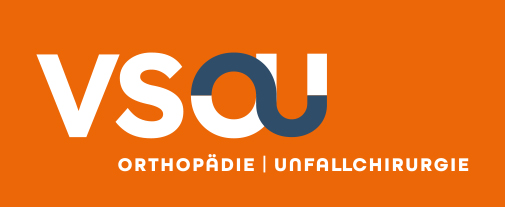Übersichtsarbeiten - OUP 03/2023
Ralph Kayser, Antje Lange, Liv Fünfgeld
Einführung:
Bei zahlreichen Angeboten zur Erlernung manualmedizinischer Diagnostik- und Behandlungstechniken spielt die Region der oberen Halswirbelsäule als eine der Schlüsselregionen schulübergreifend eine zentrale Rolle. Insbesondere Impulstechniken, unter anderem auch am ersten Halswirbel, werden jedoch unterschiedlich bewertet und in das therapeutische Konzept eingebunden.
Fragestellung
Es soll die Frage beantwortet werden, ob und in welchem Maße aus praktischer manualmedizinisch ärztlicher und manualtherapeutisch physiotherapeutischer Sicht, aber auch nach evidenzbasierten wissenschaftlichen Kriterien eine Sonderrolle der Behandlung von Kopfgelenksstörungen unter besonderer Würdigung einer speziellen „Atlastherapie“ begründbar ist.
Material und Methoden:
Um diese Frage zu beantworten, fanden sich die Autorinnen und der Autor zusammen, um ihre Erfahrungen zu berichten und mit Fallbeispielen zu illustrieren. Eine wissenschaftliche Bewertung, eine Einordnung in aktuelle Lehrkonzepte der manuellen Medizin und manuellen Therapie und ein Abgleich mit ggf. vorhandenen Behandlungsempfehlungen und Leitlinien fand ebenfalls statt. Ein Autorenkonsensus verschiedener Berufsgruppen wurde erarbeitet.
Ergebnisse:
Die meisten praktisch tätigen Manualmedizinerinnen/Manualmediziner und Manualtherapeutinnen/Manualtherapeuten favorisieren eine zentrale Rolle der Kopfgelenke. In den Lehrkonzepten werden gesonderte Diagnostik- und Behandlungstechniken vermittelt und geübt. Zentrales Korrelat der Behandlung von Funktionsstörungen im Bereich der oberen Halswirbelsäule, insbesondere im Bereich der Kopfgelenke der Segmente C0/1 bis C2/3, ist die Reizapplikation in eine Region hoher Rezeptorendichte und die resultierende neurophysiologische Reflexantwort. Weiche Techniken und Impulstechniken sind hierbei gleichermaßen wirksam. Eine besondere Berücksichtigung der „Atlasregion“ als zentrales Regulativum der Kopfgelenksregion kann in der praktischen Tätigkeit sinnvoll sein. Wissenschaftliche Beweise für eine isolierte Betrachtung der Region fehlen. Eine Röntgendiagnostik ist ausschließlich aus differentialdiagnostischen Überlegungen heraus mit strenger Indikationsstellung zu erwägen.
Schlussfolgerung:
Die manuelle Diagnostik und Behandlung von Funktionsstörungen der Kopfgelenke ist sinnvoll und hocheffektiv. Die Rolle von „Atlasfunktionsstörungen“ sollte innerhalb etablierter Lehrkonzepte der Manuellen Medizin betrachtet werden. Ein hohes Maß an palpatorischer Erfahrung ist für die Diagnostik und Behandlung atlasassoziierter Funktionsstörungen erforderlich. Eine isolierte „Atlasbehandlung“ außerhalb dieses Kontextes kann nicht empfohlen werden.
Schlüsselwörter:
Manuelle Medizin, manuelle Therapie, Kopfgelenke, Atlastherapie
Zitierweise:
Kayser R, Lange A, Fünfgeld L: Manuelle Diagnostik und Therapie von Funktionsstörungen der oberen Halswirbelsäule und die Rolle von „Atlasfunktionsstörungen“
OUP 2023; 12: 106–112. DOI 10.53180/oup.2023.0106-0112
Introduction: The area of the upper cervical spine, as one of the key areas, plays a central role in numerous offerings for learning manual medical diagnostic and treatment techniques. However, HVLA (high velocity low amplitude)-techniques, in particular those on the first cervical vertebra, are evaluated differently and integrated into the therapeutic concept.
Question: The aim of this article is to answer the question of whether and if so to what extent a special treatment of upper cervical joint disorders can be justified from a practical manual medical and manual physiotherapeutic point of view, but also according to evidence-based scientific criteria, with an explicit focus on a special „atlas therapy“.
Material and methods: In order to answer this question, the authors got together to report on their experiences and to illustrate them with case studies. A scientific evaluation, a classification into current teaching concepts of manual medicine and manual therapy and a comparison with any existing treatment recommendations and guidelines also took place. A consensus of authors from various professional groups was developed.
Results: Most practitioners of manual medicine and manual therapy favor a central role for the upper cervical spine. In teaching concepts, separate diagnostic and treatment techniques are taught and practiced. The main correlating anatomic structures of the transitional area between upper cervical spine and head (segments O/C1 to C2/3) are equipped with a high density of receptors. By the application of stimuli in this area a neurophysiological reflex response is obtained. Soft techniques and HVLA techniques are equally effective in this respect. A special consideration of the „atlas region“ as the central regulator of the cervical area can be useful in practical work. Scientific evidence for an isolated view of this area is lacking. X-ray diagnostics should only be considered out of differential diagnostic considerations with a strict indication.
Conclusion: The manual diagnostic and treatment of functional disorders of the upper cervical spine is useful and highly effective. The role of „atlas dysfunctions“ should be considered within established teaching concepts of manual medicine and is then very useful. A high degree of palpatory experience is required for the diagnostic and treatment of atlas-associated functional disorders. An isolated “atlas treatment” outside of this context cannot be recommended.
Keywords: Manual medicine, manual therapy, head joints, atlas therap
Citation: Kayser R, Lange A, Fünfgeld L: Manual diagnostic and treatment of functional disorders of the upper cervical spine and the role of „atlas dysfunctions“
OUP 2023; 12: 106–112. DOI 10.53180/oup.2023.0106-0112
R. Kayser: Tagesklinik für Rehabilitative Medizin, Schwerin & Ärztevereinigung für Manuelle Medizin (ÄMM), Berlin
A. Lange Praxis für Physiotherapie, Berlin & Ärztevereinigung für Manuelle Medizin (ÄMM), Berlin
L. Fünfgeld: Praxis für Allgemeinmedizin und Manuelle Medizin, Cottbus & Ärztevereinigung für Manuelle Medizin (ÄMM), Berlin
